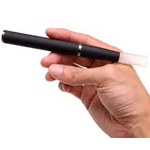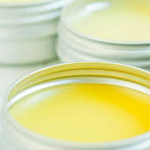
Within the rapidly growing medical marijuana movement, individuals have developed many different methods of cannabis consumption. Naturally this phenomena can come with associated positives and negatives.
On the positive side, these products allow the therapeutic potential of the plant to be realized for many different medical conditions.
On the other hand, these different methods of consumption potentially create confusion for patients, who end up having to experiment with different methods in order to achieve optimal relief.
Methods of Consumption and How They Differ
When considering cannabis consumption methods, there are two basic concepts which come into play – route of entry into the body and time of effect.
On the positive side, these products allow the therapeutic potential of the plant to be realized for many different medical conditions.
On the other hand, these different methods of consumption potentially create confusion for patients, who end up having to experiment with different methods in order to achieve optimal relief.
Methods of Consumption and How They Differ
When considering cannabis consumption methods, there are two basic concepts which come into play – route of entry into the body and time of effect.
Inhalation of Cannabis
 When most people think about cannabis, the first thought that comes to mind is smoking, whether it be through blunts, joints, pipes, or bongs. While this may be the most popular method of consumption it is not the healthiest method. In addition to smoking, cannabis can also be inhaled via vaporization and there are numerous products to help facilitate this process.
When most people think about cannabis, the first thought that comes to mind is smoking, whether it be through blunts, joints, pipes, or bongs. While this may be the most popular method of consumption it is not the healthiest method. In addition to smoking, cannabis can also be inhaled via vaporization and there are numerous products to help facilitate this process.“Consuming cannabis via inhalation has the shortest time of effect of all routes of entry.”
When you inhale cannabis, the majority of cannabinoids, enter the body through the lungs, where they are passed along directly into your blood stream.
Due to this direct exchange, consuming cannabis via inhalation has the shortest time of effect of all routes of entry.
In a study done by Huestis and colleagues subjects who consumed cannabis via inhalation reported feeling the effects of the medication within minutes, with peak effects around the hour mark and total duration of effects around two hours. However, it is important to note that there can be significant variation in these times due to factors, such as cannabinoid content, depth and length of inhalation (a.k.a. smoking style), and previous cannabis exposure (tolerance).
From a health standpoint, a comparison of smoked cannabis to vaporization reveals that there potential advantages associated with vaporization which include more efficient cannabinoid extraction and a decreased exposure to toxic elements such as carbon monoxide and tar, which are derived from smoking.
In a study done by Huestis and colleagues subjects who consumed cannabis via inhalation reported feeling the effects of the medication within minutes, with peak effects around the hour mark and total duration of effects around two hours. However, it is important to note that there can be significant variation in these times due to factors, such as cannabinoid content, depth and length of inhalation (a.k.a. smoking style), and previous cannabis exposure (tolerance).
From a health standpoint, a comparison of smoked cannabis to vaporization reveals that there potential advantages associated with vaporization which include more efficient cannabinoid extraction and a decreased exposure to toxic elements such as carbon monoxide and tar, which are derived from smoking.
Oral Intake of Cannabis
In addition to inhalation, cannabis can be consumed orally. Affectionately known as edibles, cannabis consumed orally enters the blood stream after being digested, or broken down in the stomach and is absorbed in the intestines.
Subjects who consume cannabis orally usually report feeling the effects within thirty minutes, with peak effects around the one hour mark and total duration of effects ranging as long as six hours.
The reasons for this can be attributed to the process of digestion, in which edibles have to be broken down from their original food state to a molecular cannabinoid state in order to be absorbed. The gradual nature of the digestion process accounts for the longer effects of this method of consumption.
It is also important to note, that factors such as the amount of food consumed prior to medicating, strength of the product and even a person’s metabolism can all affect the overall experience.
Sublingual/Oral-mucosal
 Before you swallow, cannabis can also enter the blood stream. Under the tongue and within the mouth there are a large number of blood vessels which can absorb cannabinoids.
Before you swallow, cannabis can also enter the blood stream. Under the tongue and within the mouth there are a large number of blood vessels which can absorb cannabinoids.Common examples of these type of medications include dissolvable strips, sublingual sprays, or medicated lozenges or tinctures.
The time of onset for this method of consumption is similar to those seen in general oral consumption, however, some studies have reported an earlier time to effect.
Cannabis Topicals
Cannabinoids, much like the active ingredients in other medications, can also be absorbed through the skin. The skin has a relatively complex absorption process that majorly involves a chemical’s ability to dissolve in H20.
Examples of topical products include creams, balms and even patches much the like the ones often used to quit smoking cigarettes.
 While not widely studied, there is research which shows that topical application of cannabinoids has an onset of action within minutes locally (i.e. creams and balms applied to a joint), with duration of these effects lasting one to two hours. Individuals who used patches reported onset of action within two hours and duration of effect lasting upwards of two days.
While not widely studied, there is research which shows that topical application of cannabinoids has an onset of action within minutes locally (i.e. creams and balms applied to a joint), with duration of these effects lasting one to two hours. Individuals who used patches reported onset of action within two hours and duration of effect lasting upwards of two days.Hopefully, some of the ideas outlined here serve as a guide in helping you use your cannabis responsibly. After all, nobody wants to find themselves in a situation where they have accidentally consumed too much cannabis and are faced with a fit of anxiety.
FROM THE MJ DIRECTORY Visit the directory
